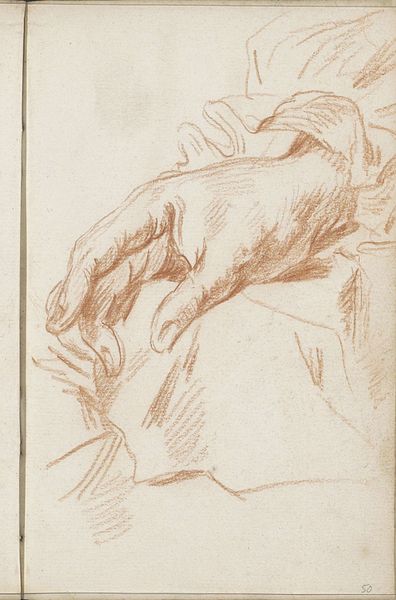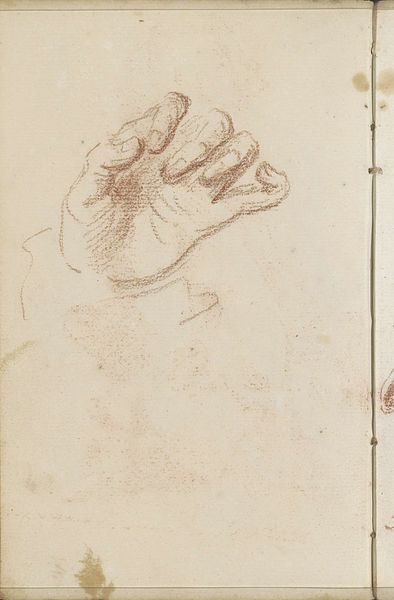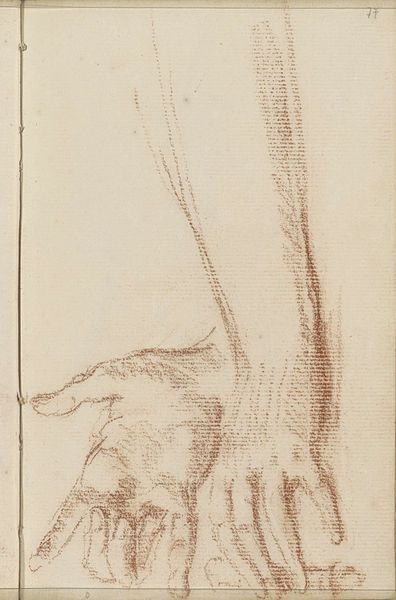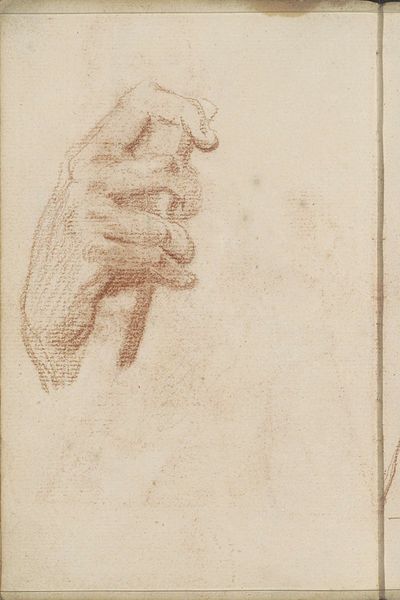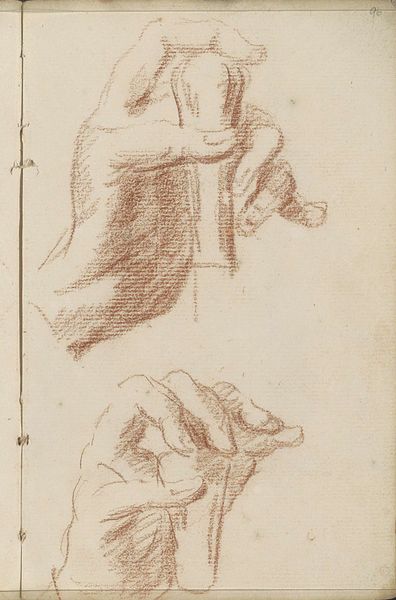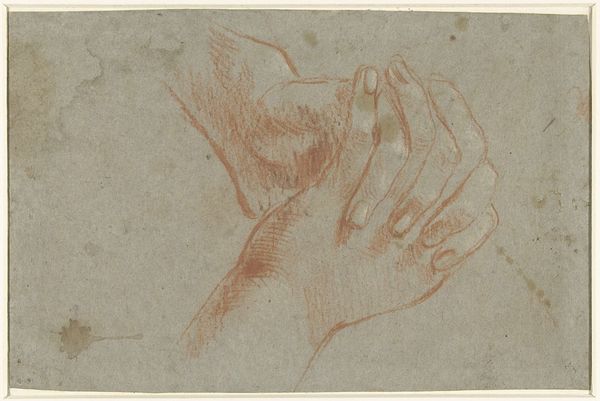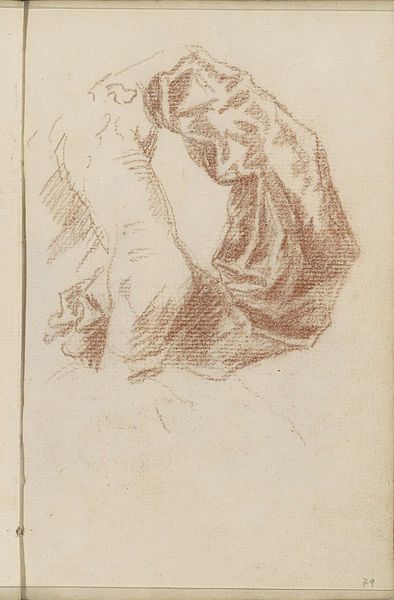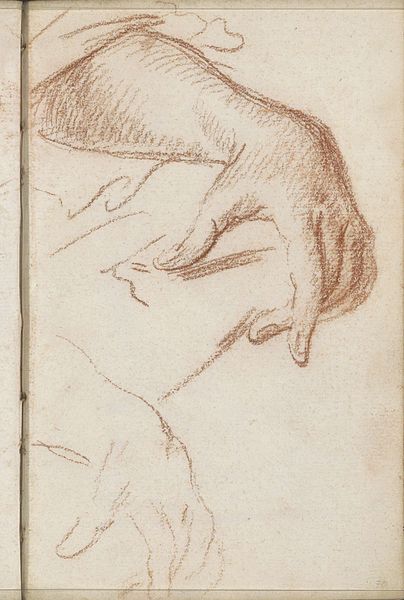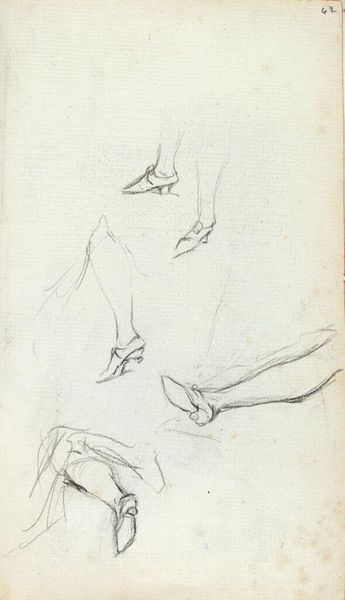
drawing, pencil
#
portrait
#
drawing
#
amateur sketch
#
toned paper
#
light pencil work
#
baroque
#
pencil sketch
#
figuration
#
form
#
personal sketchbook
#
pencil drawing
#
ink drawing experimentation
#
pencil
#
line
#
sketchbook drawing
#
portrait drawing
#
pencil work
Copyright: Rijks Museum: Open Domain
Curator: Here we have a work by Petrus Johannes van Reysschoot, dating roughly from 1710 to 1772. It's a drawing entitled "Handen," executed in pencil on toned paper. Editor: Well, immediately, there’s a sketch-like quality that is really striking. The rendering seems very immediate and visceral. Is this, perhaps, a preparatory sketch for something larger? Curator: It certainly has that feel, doesn’t it? Look at the artist’s approach to line and form—the very deliberate structuring of these hands in relationship to one another and the page. He’s using hatching and cross-hatching techniques, the economy of the lines to really define volume, mass. Notice the layering, how it creates depth within a relatively simple composition. Editor: Yes, but consider the rough quality of the strokes. It isn't highly polished—more about utility, maybe exploring the function of hands. Their capabilities? We see them almost disembodied; focus shifts from representation to raw material. Curator: I think that reading is very valid given the subject, I'd also posit this is still a considered engagement with baroque conventions, evident in the composition—hands interacting with each other. Consider the implied narrative, this interplay evokes questions of purpose, of communication, of human engagement even. Editor: Maybe that narrative is simply of process itself! How many iterations did Reysschoot execute prior to finding these relationships compelling enough? This gives value not just to end result, but artistic journey, the manual labor in creation. Curator: Yes, but look at the almost formal treatment, where van Reysschoot manages to invoke this elevated Baroque ideal through the simple exploration of form using only a pencil on toned paper. Editor: Indeed! Even with rudimentary tools—the social function here becomes transformed as well: what originally may have been practice then takes an intrinsic turn by preserving and transforming labor into objecthood itself. Curator: Precisely! The power and beauty of a line, an ideal form emerges that captures both reality and the human endeavor simultaneously. Editor: In the end then we observe, it reveals process—but also, more poignantly reveals not just skill and hand movements. "Handen" instead immortalizes the potential residing within human touch through a dedication towards diligent observation of forms themselves, transforming basic components directly connected towards tangible material outcomes beyond art-making contexts also involved.
Comments
No comments
Be the first to comment and join the conversation on the ultimate creative platform.
